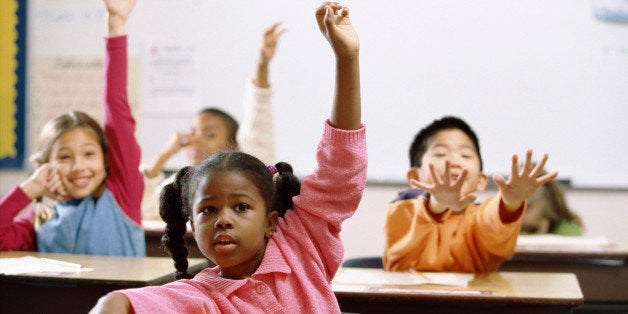
In 1970, I was kicked out of a teacher education program in California. More accurately, the letter I received said, "You may continue to take [i.e. pay tuition for] classes, but we will not endorse your application for a teaching credential." My offense that triggered this action was to challenge the deficit-based approach and perspectives of my professors. They were teaching us to teach the black and brown children we might encounter as sick white kids. Meaning, we should fix them so they would become like the suburban, middle-class, white children we should be so "fortunate" to teach.
I was young enough, and naïve enough, to believe my professors would hear me when I suggested that their methods were not going to work. All black families were not poor, all black parents were not uneducated, all brown kids were not from Mexico. Acknowledging cultural differences as assets to build upon would result in a classroom environment that supported greater success from more of the students. For example, if a black male student came from a home where there was no father, his role in the family as oldest male means that he is given responsibility for and respect from his siblings, attributes that make him highly suitable for leadership in the classroom. His willingness to speak up, and his tendency to challenge what does not feel right to him, does not come from disrespect for his teachers, but from a heightened sense of accountability and a thorough understanding of consequences for errors in judgement. Accordingly, he may feel disrespected by his teachers if he feels they are "talking down" to him.
In my teacher prep program, we were told we needed to discipline the insolence we would experience, and protect ourselves from the anger, ignorance and violence found in the non-white communities in which we may have the "misfortune" of being assigned to teach. "Do the best you can," we were told, "and in a couple of years you will be able to transfer to a better school."
That attitude is still present among educators. Years after I earned my credential from another institution, I am now providing professional development to teachers who have not been adequately prepared for the students they are teaching. Recently, a group of teachers in a session I was conducting, who could have been the same ones sitting in the class with me at that first institution, said, "We are good teachers. If you got us better students, we could do a better job. What we need now is more rules and better discipline. These kids are dangerous. They will all be in prison or on welfare by the time they are old enough to graduate."
Teachers have been taught to be afraid of their students. Many do not see how this attitude contributes to a culture of fear and acrimony in our country's public schools. This mindset is hurting our students. The U.S. Education Department recently released its 2013-2014 Civil Rights Data Collection results which included 95,000 schools and 50 million students. The numbers are terrifying. Black preschool children are 3.6 times as likely to receive one or more out-of-school suspensions as white preschool children. Furthermore, there are more police and security guards than counselors in schools.
When adults are afraid of the children in their classrooms, the children can sense it. The resulting tension in the classroom broadcasts the lack of safety felt by everyone. When school administrators allow teachers to eject students perceived as non-compliant, they are robbing teachers the opportunity to build on different styles of leadership and discourse used by the children. They are allowing teachers to abdicate their responsibility to manage their classrooms.
When the energies of 4-, 5- and 6 year-olds is not corralled and redirected to learning, these children are consigned to failure.
Children are not born violent, contentious or oppositional. Most of the time, behaviors in children perceived as such are protective and defensive. They are present when the child feels attacked, unsafe or in danger. When teachers are taught to fear their students and to expect them to fail, their biases predispose them to create the educational environment where this happens.
The under-education of black and brown children in this country is a societal problem with no simple solution; however, it can be addressed one classroom at a time, one child at a time. When teachers assume that all students are the same- past and present - they miss information about these children and their families that may be clues to how to teach them. However, when teachers approach their students with curiosity, compassion, and the cultural competence to teach the child who is there, teachers are able to build on each student's many assets, e.g. resilience, perseverance, creativity and native intelligence. When this happens, what at first glance seems insurmountable, becomes commonplace.
Kikanza Nuri-Robins is the co-author of Culturally Proficient Instruction, A Guide for People who Teach.